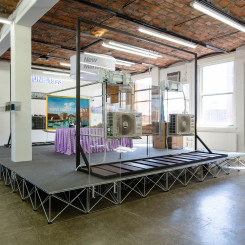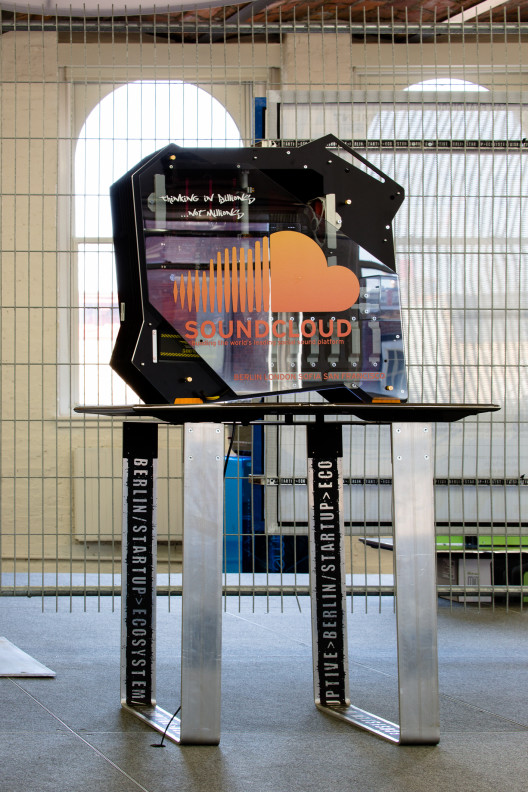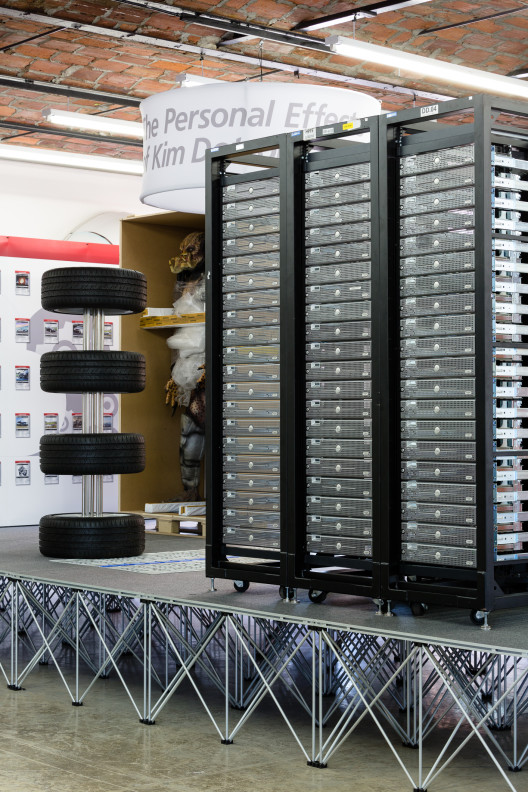Simon Denny, “The Innovator’s Dilemma”
MoMA PS1 (22-25 Jackson Ave. at the intersection of 46th Ave, Long Island City, New York 11101), Apr 3–Sep 7, 2015.
Named after a classic of business theory revered among the Silicon Valley Crowd, “The Innovator’s Dilemma” at PS1 amounts to a mini-retrospective of Simon Denny’s works. Six of Denny’s projects, dating from 2009 to 2014, are shown, each of which was exhibited as an individual show at institutions such as the ICA in London, Portikus in Frankfurt and Galerie Buchholz in Berlin. Bringing these projects together should have resulted in the presentation of a coherent body of work, in which Denny turns his gaze to different facets of the technology industry and illuminates its stakes, modes of thinking, and aesthetics. Instead, we are presented with a lot of the same thing: a complacent series of installations, all of which regurgitate the language and look of different tech brands with no criticality.
The display at the museum is brilliant: each project is shown on a small stage reminiscent of the temporary structures used for trade fairs with the name of the work emblazoned on a circular panel above it—as befits the prettiest booth at any communications trade show. It fits the works like a glove, especially with “All You Need is Data” (2013): a series of canvases enumerating the schedule of the 12th edition of the DLD (Digital Life Design) conference in Munich, which, according to its website, is “a global network on innovation, digitization, science and culture which connects business, creative and social leaders, opinion-formers and influencers for crossover conversation and inspiration.” The canvases are accounts of all the panels in the talks reduced to platitudes such as “we are hard-wired to share” (from Airbnb CEO Brian Chesky’s talk) and “we could throw an asset on there and the next day be really profitable” (tumblr’s David Karp). Taken out of context, these statements sound grandiose and somewhat ridiculous. That is one strategy to deal with the repetitive, intentionally vague language that surrounds the tech industry (think “crossover conversation and inspiration,” above)—but it is not one that performs the work of actually deconstructing this language in order to examine why it is employed.
The function of this rhetoric is clearly one of Denny’s interests. In “New Management” (2014), he looks at the business philosophy of Samsung’s Chairman Lee Kun-hee, as iterated in what is known at Samsung as the “Frankfurt Declaration”: a three-day event for company executives hosted in a hotel by the international airport in Frankfurt. Plastered with platitudes such as “change begins with me,” Denny recreates the hotel conference room (complete with a reproduction of a Canaletto painting of Venice, the kind one finds in many hotels today, inscribed with the words New Management). Once again, the recreation of the setting means drawing attention to things but never saying anything about them. What does “change everything but your spouse and your kids” (another Kun-hee gem) really mean in terms of human relations or the way a business conceives of its role in the world? The language around terms like “disruption” in the tech industry is, for example, extremely gendered—no mention of this in the show. The rhetoric around this field needs to be played with, altered and questioned in order to really examine the structure of dominance Denny seems so interested in: What makes TED talks popular? What are the top ten startups in Berlin?
Considering the murky economical structures of both these industries—art and tech—Denny’s methodology of appropriation just doesn’t cut it. While visually, the work hints at criticality—in its low-fi aesthetic (which reads, “I’m not exactly part of this high-production-value stuff), in the interest in the progression of technology (for example, the presentation of different generations of Samsung cell phones as part of “New Management”), and the installation in the museum space, which makes a gesture toward transparency by recreating the environment of a trade fair and by exposing the bones of the structure—all of these tender, tacit signals of criticism do not amount to a statement. The work does not speak to vocabulary and how it is used to cover up the financial structures that technology enables and support (the most obvious example being the language of “democracy” and “openness” on the internet, which blankets a growingly corporate web based on free labor and murky copyright). Nor does Denny comment on the actual material of technology: the look of technology, from branding to physical matter, is constantly present, but the effects thereof—social and environmental concerns from the aforementioned gender imbalance, issues of labor both online and in the disenfranchisement of the “sharing economy,” and through copyright concerns, coltan mining, and energy drain—are never present.
Denny is getting a lot of attention these days—he is also representing his native New Zealand in the Venice Biennial—because of the topicality of his work. A lot of artists are talking about technology and the culture around it, but few have dedicated their practice to it to the extent Denny has. And for good reason. The problem is that this subject is too urgent, too important, for work that relies on appropriation to highlight the idiosyncrasies of the tech industries rather than actually say something about it. Implicit criticism just isn’t enough.
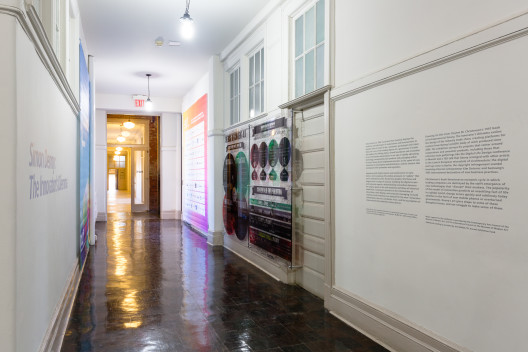
“Simon Denny: The Innovator’s Dilemma”, exhibition view at MoMA PS1, New York. Image courtesy of the artist and MoMA PS1. Photo by Pablo Enriquez.
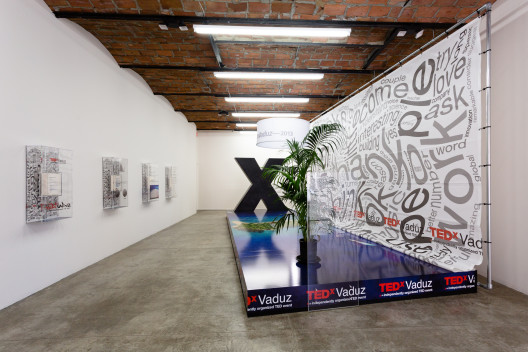
“Simon Denny: The Innovator’s Dilemma”, exhibition view at MoMA PS1, New York. Image courtesy of the artist and MoMA PS1. Photo by Pablo Enriquez.
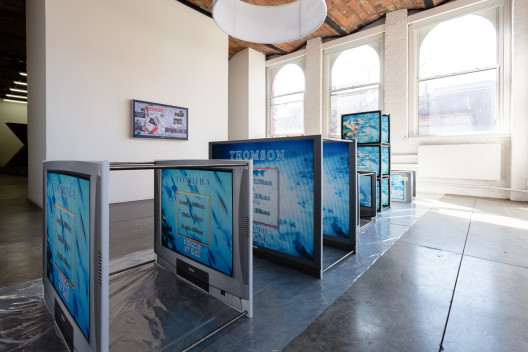
“Simon Denny: The Innovator’s Dilemma”, exhibition view at MoMA PS1, New York. Image courtesy of the artist and MoMA PS1. Photo by Pablo Enriquez.
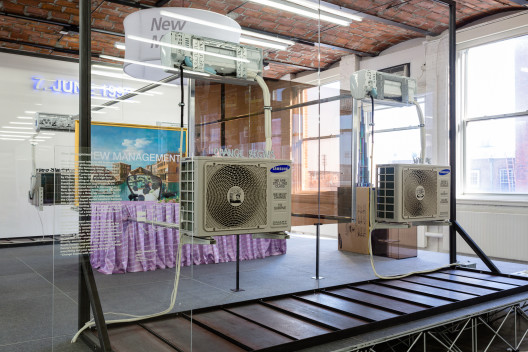
“Simon Denny: The Innovator’s Dilemma”, exhibition view at MoMA PS1, New York. Image courtesy of the artist and MoMA PS1. Photo by Pablo Enriquez.
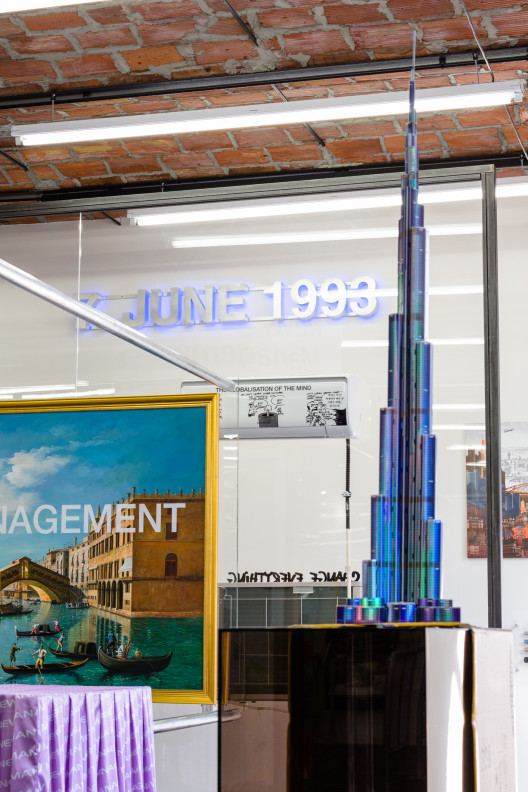
“Simon Denny: The Innovator’s Dilemma”, exhibition view at MoMA PS1, New York. Image courtesy of the artist and MoMA PS1. Photo by Pablo Enriquez.
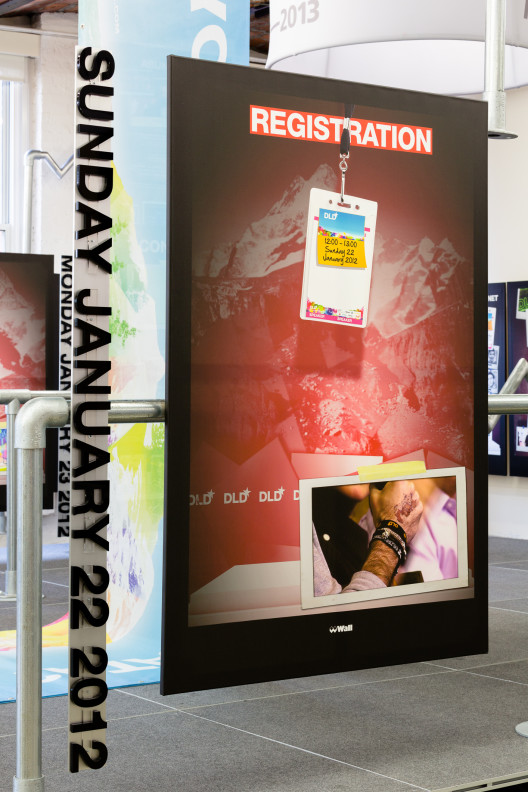
“Simon Denny: The Innovator’s Dilemma”, exhibition view at MoMA PS1, New York. Image courtesy of the artist and MoMA PS1. Photo by Pablo Enriquez.

